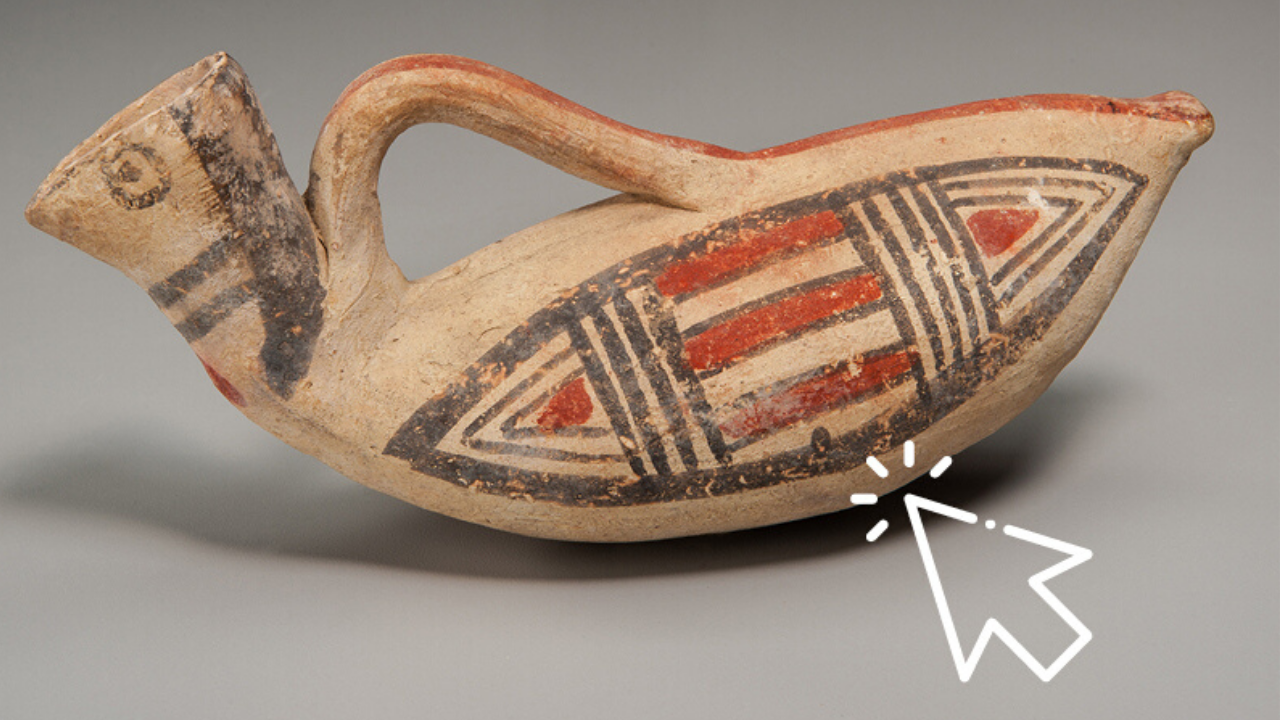
In late February 2020, the Sidney and Lois Eskenazi Museum of Art at Indiana University became the latest institution to launch an online collections portal, a feature that is increasingly expected of art museums. Built on our existing collection and digital asset management systems, the portal gives visitors an opportunity to explore our six curatorial departments, with everything from African and Oceanic works of art to Japanese bamboo baskets and Marcel Duchamp’s readymades, and reaching beyond what’s on display in the galleries.
We couldn’t have known that three short weeks after launch, our museum would be closed to the public, our exhibitions and public programming would be postponed, and Collections Online would be our only way of reaching audience, thanks to COVID-19 and IU’s decision to keep staff and students safe by working and learning remotely for the remainder of the semester. As a result, when compared to numbers from immediately after the launch, visits to our brand-new website have increased dramatically, with time spent on site pages multiplying fivefold in the two weeks after the closure. Rather than slowly building online capacity and audience, Collections Online was suddenly thrust front and center to deliver the museum’s mission-driven activities.
We’re now putting our design for the portal to test, hoping our strategies to make it a welcoming and meaningful entry to our collection will resonate with visitors.
I have a confession to make: Until joining the Eskenazi Museum of Art staff, I could count on the fingers of one hand the number of art museums I’d ever visited. I was in my late teens when I visited my first one—the nearest being several hours from my rural hometown and out of reach for a lower-income family like mine—and by then I had the faint suspicion that perhaps I’d missed that magical window of opportunity to become an “art person”—one who could be naturally comfortable in that setting. Instead of art, I cultivated dual specialties in information technology and medieval history, with an interest in public and digital humanities that lends itself well to problem-solving for nonprofits like art museums. So, when I applied myself to the challenge of Collections Online, I brought all of these perspectives with me: rural kid, art outsider, public humanist, technologist.
Through marrying these new perspectives with the expertise of curators and lifelong museumgoers, the vision for Collections Online began to take shape. We quickly established one of the cornerstones of our Collections Online project: a commitment to inviting people who, like me, don’t necessarily see themselves as “art museum people” and may lack confidence diving in to explore the collection. This was especially important to us given our location—our museum is located in Bloomington, Indiana, a thriving college town, but you don’t have to go far outside the city limits to find small, rural towns that mirror the one where I grew up.
We began by asking how this audience’s needs would differ from someone more familiar with art museums. Blank search bars would be of very little help to this audience during their early visits. They might not know the names of artists, artwork titles, or keywords to search, and facing a “no results found” page over and over again can be disheartening and turn a visitor away before they ever see something from the collection. Pre-built browse options by collection areas felt like a better fit—giving the visitor a piece of information, knowing that they would find some artwork to explore—but it still didn’t seem like we were giving the audience the tools to feel confident in exploring on their own.
We decided that our Collections Online needed to be closely tied to a rotating calendar of “feature essay” content. This would provide art newcomers with the orientation they needed, and give more experienced art enthusiasts deeper dives into content about the art in the collection. One of the first features was “Getting Started with Collections Online.” A straightforward primer on what visitors could find on the site, it included information like, “What is an artwork’s tombstone?”—topics that we in the museum world often take for granted. We also have features for teaching with Collections Online and handpicked “hidden treasures” from our seven curators. In the coming weeks, we’ll be publishing features about Chinese calligraphy, arts-based wellness, Impressionism, and contemporary art. All of these essays assume no prior knowledge of the subject, so for newcomers, they provide an excellent primer. And for those with some existing knowledge on the subject, they also provide insight into the ethos of the museum and its staff.
This conscious design toward non-expert visitors extended to the way we added records and planned for them to be searched. Rather than using what we called the “warehouse model,” in which we would make all forty-five thousand records in the museum’s collection available immediately, going back and “cleaning up” information as our staff had time, we decided to take a phased approach. Each department’s curator committed to preparing a set number of artwork records before the site launch—including reviewing tombstones and label text, and also writing “descriptive text,” which serves as a visual (accessible) description of each artwork—choosing records that they believed represented important parts of the collection. Moving forward, each curatorial department will add a fixed number of new records each quarter until all records are available online. With this approach, we ensured that the most complete and accurate information possible was made available to visitors.
We have also left room for unexpected encounters through our search function. When our visitors search the collection, they are, by default, searching across a wide range of fields, including the entire tombstone, the visual description of the artwork, and the label text written by the curator. Searching across so many fields—particularly the label text—does open the door to a number of false positives. If one searches for Vincent van Gogh, for instance, his etching Portrait of Dr. Paul-Ferdinand Gachet will result, of course, but so will Maurice de Vlaminck’s Still Life, because the label text for the latter work mentions that Vlaminck was particularly inspired by Van Gogh’s work. One month after launch, we’re now assessing the success of that approach. Our thinking is that, for some of our audiences, “perfect results” may be the enemy of “useful results.” The type of search we chose introduces a variability that allows visitors to make accidental discoveries of artists or artworks they might never have encountered otherwise. In this way, the online experience becomes something akin to exploring a physical gallery or exhibition, with ever-changing points of reference.
When we launched the new Collections Online in February, we didn’t know that, less than a month later, we would be facing extended closure as a result of COVID-19, or that this portal would almost immediately become the only way for visitors to see the art in our collection. As a result, we’re suddenly seeing all of our assumptions about Collections Online put to the test, as the university and area schools switch to online teaching and the surrounding communities look for ways to stay engaged with the arts. As we face the coming weeks and months, we’re listening to our audience’s feedback, monitoring our analytics to see how people engage with the site, and continuing to expand the site’s content to provide our visitors with something new.
About the author:
Cassi Tucker is the Manager of Museum Technology at the Sidney and Lois Eskenazi Museum of Art at Indiana University. Her background is in information technology and medieval history, with a focus on digital public humanities, which she uses to build bridges between traditional interpretation and digital technology while advocating for inclusivity and accessibility. Cassi’s favorite work of art in the Eskenazi Museum of Art’s Collections Online is Matteo di Giovanni’s Judith with the Head of Holofernes.









What a wonderful way to reach new people! The joys of discovery are brought to everyone with a computer, and the ability to see things perhaps never before seen or considered by someone is now within their reach. I think every museum should be doing this. Sharing knowledge and experience make us all share our common and differentiated heritage. Perhaps the next time the thought of visiting a museum comes up it will be met with joy and enthusiasm!